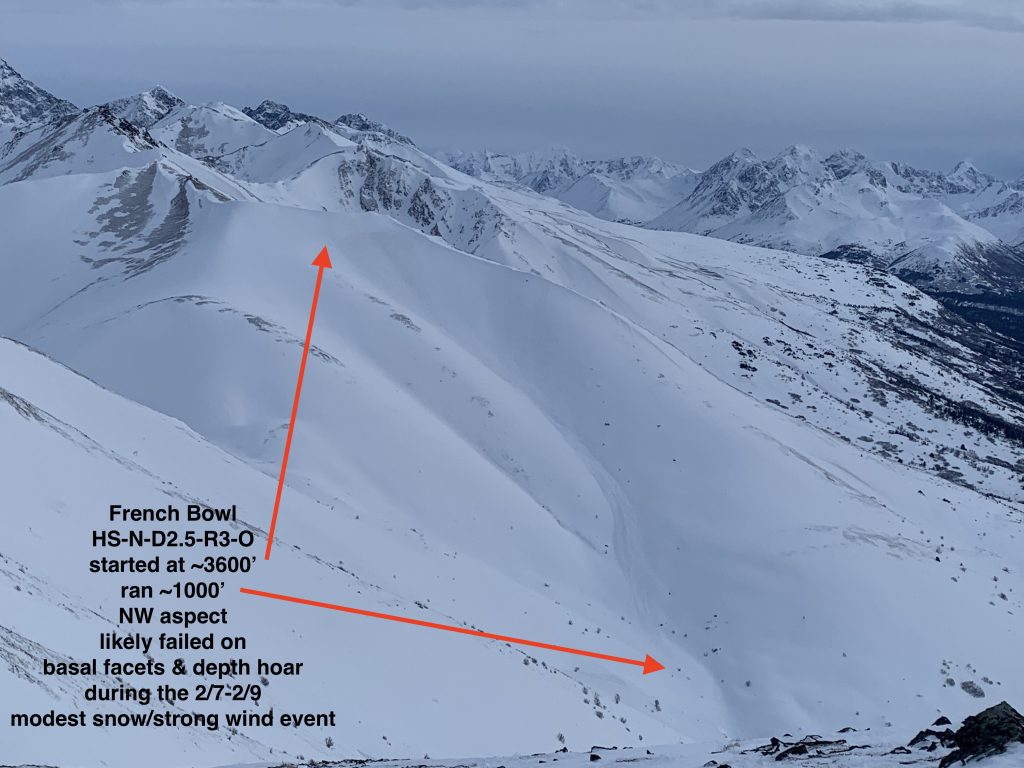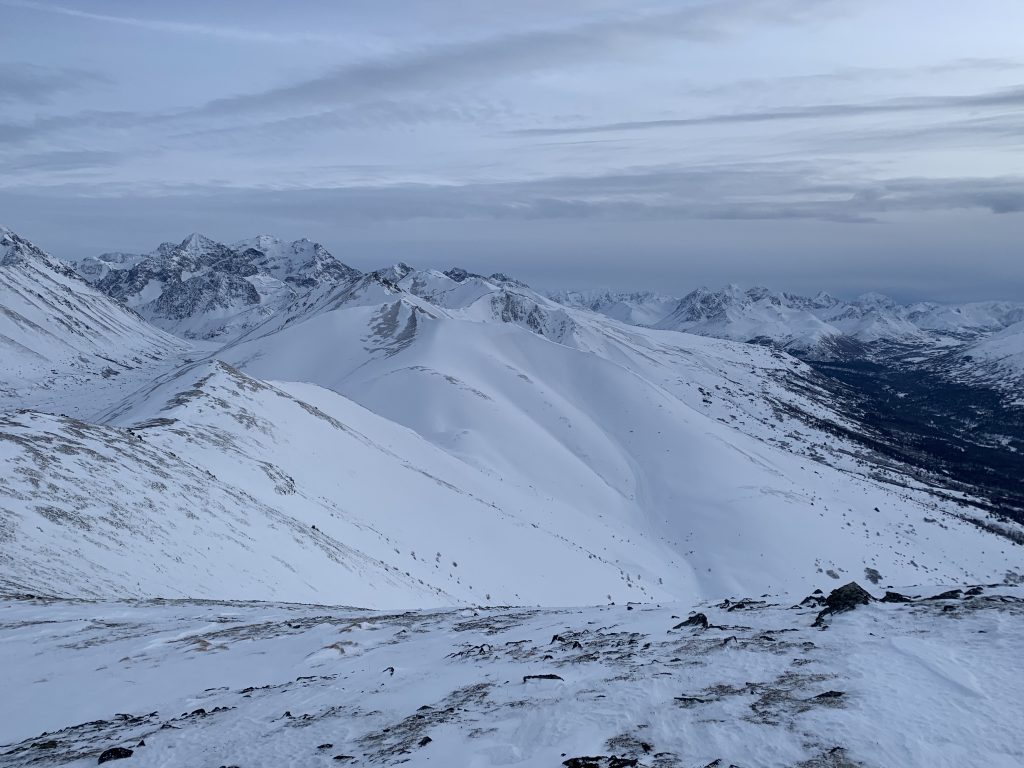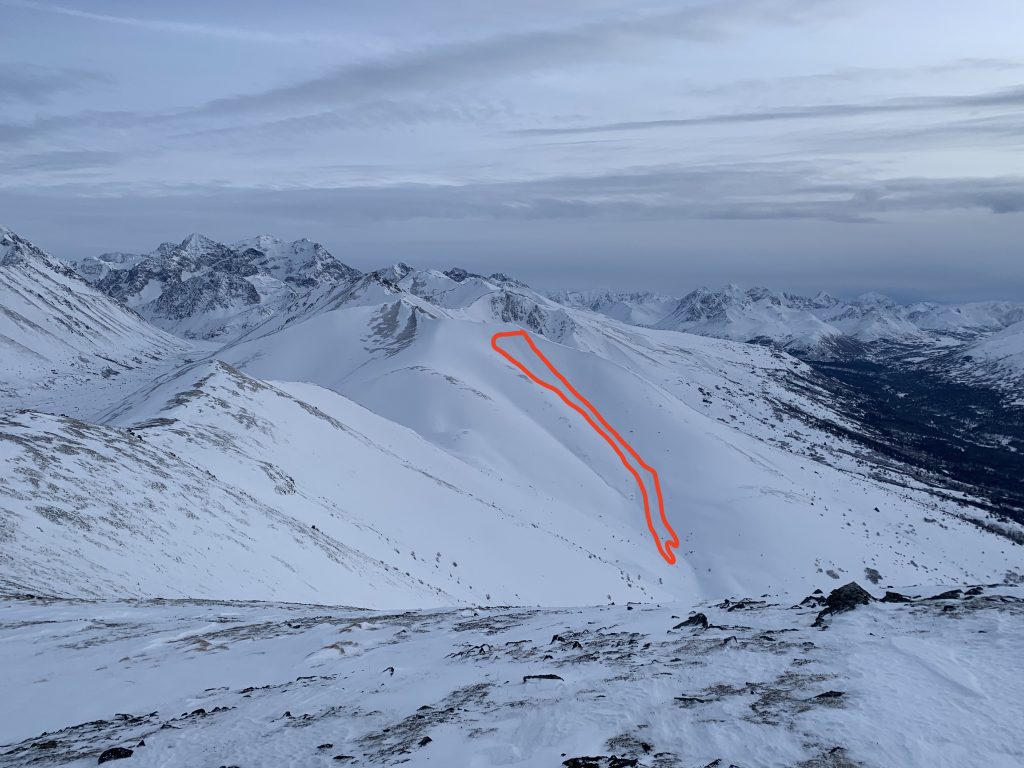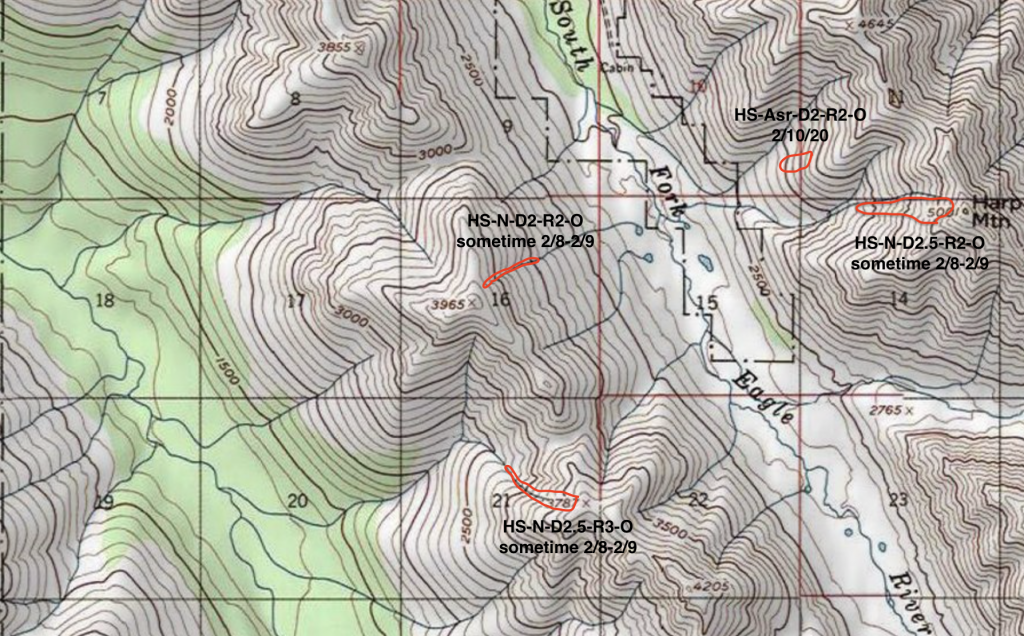Western Chugach, Chugach State Park, South Fork Eagle River, North Bowl area
Went up to Peak 3965 (North Bowl) after work. Time constraints prevented digging and thorough investigation of the snowpack in this area, but no glaring red flags like collapsing or shooting cracks were experienced on the typical route to Hunter Pass and beyond to the top of North Bowl (although great attention was paid to terrain management in order to avoid areas where such red flags would be more likely).
Temps were in the lower teens to single digits, wind was moderate from the SE, and skies were filling in and generally cloudy (but snow had not commenced as of 5:30pm). Active wind loading was observed from the moderate SE wind transporting what loose, low-density snow was still available. Surface conditions were highly variable, but acceptable and often much worse. In general, snow coverage is the best it has been in several years.
A relatively large natural avalanche from the 2/7-2/9 storm (that brought only modest snow but a long period of strong wind) was observed in French Bowl. This is the largest avalanche (natural or human triggered) that I’ve observed in French Bowl in the past decade. Unlike the persistent slab problem identified yesterday in the Harp area that is nearer the surface, the French Bowl persistent slab seems to have failed on basal facets and depth hoar near the ground. This is not surprising as advanced facets and depth hoar at the ground are common in the South Fork area. This avalanche provides further evidence that we are dealing with potentially dangerous-deadly hard slabs on multiple persistent weak layers in the Chugach State Park snowpack.






